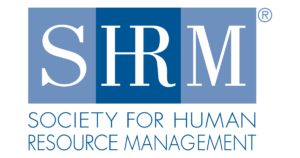Let’s face it – The hiring process is stressful for both sides. The job seeker is putting their talents and career future on the line, which is a vulnerable place to be. The organization is investing considerable resources in hopes of finding a star in the making. This is important stuff.
And yet far too many organizations make a mess out of the candidate experience in the recruiting process. This is astonishing and just plain self-destructive.
In other words, a good candidate experience is brilliant marketing for an organization; a bad one is an ongoing black eye for people interested in your employer brand. Devastating as that is, this fact is even worse: a bad hiring experience may cause the right applicant to turn down the job. Top talent has no desire to work in a disrespectful organization with leaders who simply don’t care about the recruiting process.
Savvy organizations turn HR into a powerhouse marketing and recruiting tool. Here are some steps you can take to follow their lead:
1) Walk in the job seeker’s shoes. We’ve all been job seekers at some point in our careers. As you design or improve your hiring process, keep the applicant experience front and center at all times. Yes, this is about fulfilling your organization’s needs, but the more you understand and design the process from the applicant’s point of view, the more successful you will be. Role-playing can be invaluable here. Have a team member play an applicant as you design each step of your process.
2) Communicate. Remember that disgraceful statistic: over 70 percent of online applicants never even get a form reply. This is often a symptom of dysfunctional Leadership and HR; it violates the rules of common human courtesy and smart communication. You must explain every step of the hiring process to an applicant. Always meet the deadlines and markers you have established. If for some unforeseeable reason, you’re unable to, communicate that swiftly and directly to the applicant. Stay transparent and honest all the way through.
3) Bring employees in the process. Jobs don’t exist in a vacuum. You want to hire people who are going to mesh with your culture. The best way to ensure this is to seek employee input in designing and implementing your hiring. A fresh pair of eyes can sometimes provide just the insight you’re seeking. And consider having promising candidates meet with their possible future teammates to gauge workplace culture fit. Too many HR departments want to guard their culture against the world. That’s a mistake. Moliere once said: “I take my good where I find it.” He’s one smart guy.
4) Personalize the recruiting process. You’ve heard me say it again and again: when it comes organizations and their people, one size fits no one. You want a hiring process that has built-in flexibility, not rigid rules. Some of the best talent is idiosyncratic, eccentric and maybe even a bit weird (exhibit A: Steve Jobs). The last thing you want is a process that eliminates stellar talent for bureaucratic reasons. Yes, a college degree is nice, but is it really the key determinant of an applicant’s future performance? Methinks not.
Hiring lies at the very heart of HR and Leadership. When candidates are hired after a positive experience, they hit the ground running, their commitment to your organization having been nurtured and strengthened during every step of the process. When candidates aren’t hired, they walk away feeling respected and appreciated, and are far more likely to recommend other talent look into your organization. This is world-class HR. And you can make it happen!
Read more














